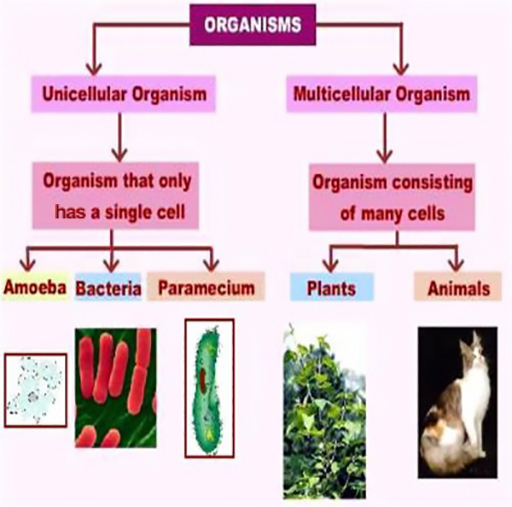is fungi unicellular or multicellular
The largest and most developed part of living organisms is fungi. Kingdom Fungi Are Fungi unicellular or multicellular.
Fungi are found both as unicellular and multicellular organisms in nature.

. Multicellular fungi produce threadlike hyphae singular hypha. In contrast fungi that can adopt a single-celled growth habit are called yeasts. They are found in just about any habitat but most live on the land mainly in.
Fungi are predominantly multicellular though early diverging lineages are largely unicellular eg Microsporidia and there have been numerous reversions to unicellularity across fungi eg Saccharomycotina Cryptococcus and other yeasts. Fungi are a kingdom of eukaryotic organisms ranging from single-celled to multi celled. How do Fungi reproduce.
An example of a unicellular fungi is. It consists of different types and orders there are multicellular or unicellular. It depends on the type of fungus and what stage of its life cycle it is at.
Single cell fungi like yeast have a more simple structure in comparison to those of mushrooms. Most fungi are multicellular but some the yeasts are simple unicellular organisms probably evolved from multicellular ancestors. Powered by Create your own unique website with customizable templates.
Therefore it is believed that the mycelium shares cytoplasm. See full answer below. It consists of filaments called hyphae that can bunch together into structures called mycelia.
The fungi include diverse saprotrophic eukaryotic organisms with chitin cell walls Fungi can be unicellular or multicellular. Unicellular fungi are called yeasts. Almost all the fungi have a filamentous structure except the yeast cells.
The network of these tubular branching hyphae called a mycelium is considered a single organism. Photo used under Creative Commons from P_Linehan. Switching from a unicellular to multicellular organization in an Aspergillus niger hypha The hyphae of higher fungi are compartmentalized by porous septa that enable cytosolic streaming.
Most fungi are multicellular organisms except yeast. Single-celled fungi are referred to as yeasts. Fungi consist of long thread-like structures known as hyphae.
Fungi are present all over the world in marine as well as terrestrial environments. Fungi are both unicellular and multicellular. Fungi can be unicellular multicellular or dimorphic which is when the fungi is unicellular or multicellular depending on environmental conditions.
Fungi are both unicellular and multicellular organisms. What does fungus on skin look like. Can be heterotrophic or atrophic.
Unicellular fungi are yeasts. And the answer to this question is no. They are characterized by the presence of filamentous hyphae with a chitin cell wall.
Fungi live as either single-celled organisms or multicellular organisms. A fungus refers to a group of unicellular or multicellular organisms which feed on organic matter. Fungi are eukaryotes containing membrane-bound organelles.
There is a class of organisms that fungi call protozoans. Fungi can be unicellular or multicellular. Fungi Fungi can be single celled or very complex multicellular organisms.
Humanity is not able to do without them although many of them are parasites. These are the most ancient inhabitants of the Earth whose nature has not been fully studied. It depends on the type of fungus and what stage of its life cycle it is at.
A mold US or mould UK NZ AU ZA IN CA IE is a fungus that grows in the form of multicellular filaments called hyphae. What symbiotic relationships do Fungi participate in. Fungi in the morphological vegetative stage consist of a tangle of slender thread-like hyphae whereas the reproductive stage is usually more obvious.
No many fungi are multicellular. Unicellular organisms are made of a single cell and are microscopic. These hyphae together form a mesh-like structure called mycelium.
Fungi can be unicellular andor multicellular. Fungi possess a cell wall which is made up of chitin and polysaccharides. Are all fungi unicellular.
All fungi belong to the kingdom of Fungi. Kingdom Fungi comprises the fungi such as mushrooms molds and yeasts eukaryotic heterotrophs that digest food outside of their bodies. The vegetative body of a fungus is a unicellular or multicellular thallus.
Fungi reproduce asexually or sexually with spores. Similarly is a mold unicellular. Most of the body of a fungi is made from a network of long thin filaments called hyphae.
The vast majority of fungi are multicellular. Fungi can be unicellular andor multicellular. Dimorphic fungi can change from the unicellular to multicellular state depending on environmental conditions.
They can be either single-celled or multicellular organism. Fungi are both unicellular and multicellular. All other types of fungi are multicellular.
Are Fungi vascular or non-vascular. These protozoa are diverse and it is possible that there may be several different types of protozoans. Fungi are parasitic mutualistic and saprotrophic.
Hyphae filaments are made from tubular cells that connect end on end.

Fungi Characteristics Of Fungi Mycology Study Of Fungi Eukaryotic Heterotrophic Decomposers Multicellular Except Yeast Unicellular Lack True Roots Ppt Download

Cellular Structures Of Unicellular And Multicellular Fungi A Rozella Download Scientific Diagram

Is Fungi A Multicellular Or Unicellular Organism Quora

Microgravity Living On The International Space Station Openlearn Open University

What Are Fungi Wonders Of Biology
Characteristics Of Fungi Boundless Biology

Why Classify To Organize All The Discovered Organisms

Kingdom Fungi Fungi Heterotrophic Single Celled Or Multicellular Organisms Including Yeasts Molds And Mushrooms Ppt Video Online Download

0 Response to "is fungi unicellular or multicellular"
Post a Comment